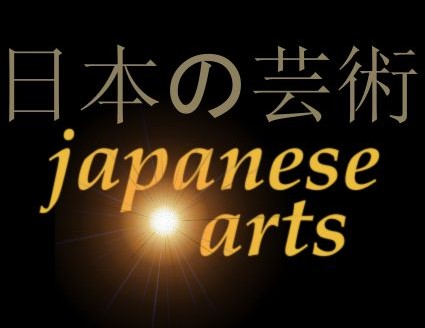| abuna-e |
mildly erotic pictures, as opposed to the more explicit shunga. |
| aragoto |
rough style of kabuki acting (cf wagoto). |
| benizuri-e |
early two-coloured prints. |
| bijinga |
paintings of women, generally courtesans. |
| bunjinga |
literati painting, the style of the intellectual amateur, aka Nanga. |
| chaya |
tea house. Used for the tiny hut built into tea gardens, for the most refined
and artistic kinds of tea ceremony, and the large and lavish houses that
were a major part of the pleasure quarters of big cities. |
| chanoyu |
tea ceremony. |
| chuban |
a standard size for prints, about 27 x 20cm. |
| daimyo |
feudal lords, aristocratic and military powers. |
| engawa |
veranda for viewing gardens, and linking in and out. |
| fusuma |
interior sliding partitions, often painted. |
| hashirakake |
narrow scroll for display on pillars of homes, commonly
something like 60x12cm. |
| hikime kagihana |
'line-eye hook-nose', a way of drawing faces since Heian times, with no concern
for individuality. |
| hiramakie |
maki-e where the artist sprinkles the design only, almost flat |
| inro |
small compartmented boxes worn dangling from the belt |
| jokomachi |
Castle towns. |
| kabuki |
broad and raucous theatre style, generally associated with lower classes. |
| kacho, kachoga |
pictures of birds and flowers, one of the classic
painting genres. |
| kakemono |
vertical scrolls, generally holding paintings, often about
twice as high as wide. |
| kana |
The term for the two Japanese syllabaries (as opposed to Kanji). |
| kanji |
The less widely read Chinese-style Japanese script. |
| kara-e |
paintings of Chinese subjects, as opposed to yamato-e. |
| kogo |
small incense box |
| kyoka |
parodies of classical waka, still in the same 31-syllable form. |
| maki-e |
gold/silver/coloured dust/particles sprinkled onto wet lacquer |
| makimono |
horizontal scrolls, generally holding paintings, often many yards long. |
| mitate |
artistic convention where contemporary settings substitute for classical or
mythological subjects. |
| mokkotsu |
'boneless' painting, i.e. without outlines, often with washes. |
| Nanga |
Southern-style painting - used interchangeably with bunjinga, above. |
| natsume |
Tea caddy |
| negoro |
black then red lacquer on much-used objects that wear in time, unevenly and unpredictably,
so that the black shows through |
| noh |
highly sophisticated theatre style, generally associated with the upper classes. |
| oban |
a standard size for prints, about 39 x 26cm. |
| onnagata |
a male actor who exclusively or mostly plays female roles. |
| sencha |
Chinese-style tea ceremony, which was less formal. |
| shiki-e |
pictures of the four seasons. |
| shunga |
erotic pictures - formerly called makura-e, or pillow pictures. A stronger
term than abuna-e, above. |
| suibokuga |
water and ink pictures - particularly used for old Zen landscape paintings. |
| sumizuri-e |
ink prints - early monochrome prints, sometimes with basic
colour added quickly by hand. |
| surimono |
privately commissioned print, generally for a special occasion. |
| takamakie |
relief maki-e where the artist sprinkles overall and cuts back, or builds up
some areas only |
| tokonoma |
alcove for displaying art objects in the home. |
| tsukinami-e |
pictures of the twelve months. |
| uki-e |
pictures illustrating linear perspective. |
| ukiyo-e |
pictures of the floating world. Images of the everyday and impermanent.
In reality, much more a painting style than a genre... |
| wagoto |
softer style of kabuki acting (cf aragoto). |
| waka |
31-syllable poem, one of the great classical forms. |
| yamato-e |
paintings of Japanese subjects, as opposed to kara-e. |
| zenga |
Zen picture - usually applied to works by Zen monks. |
| |
| Please email me with
corrections and requests for additions. |
